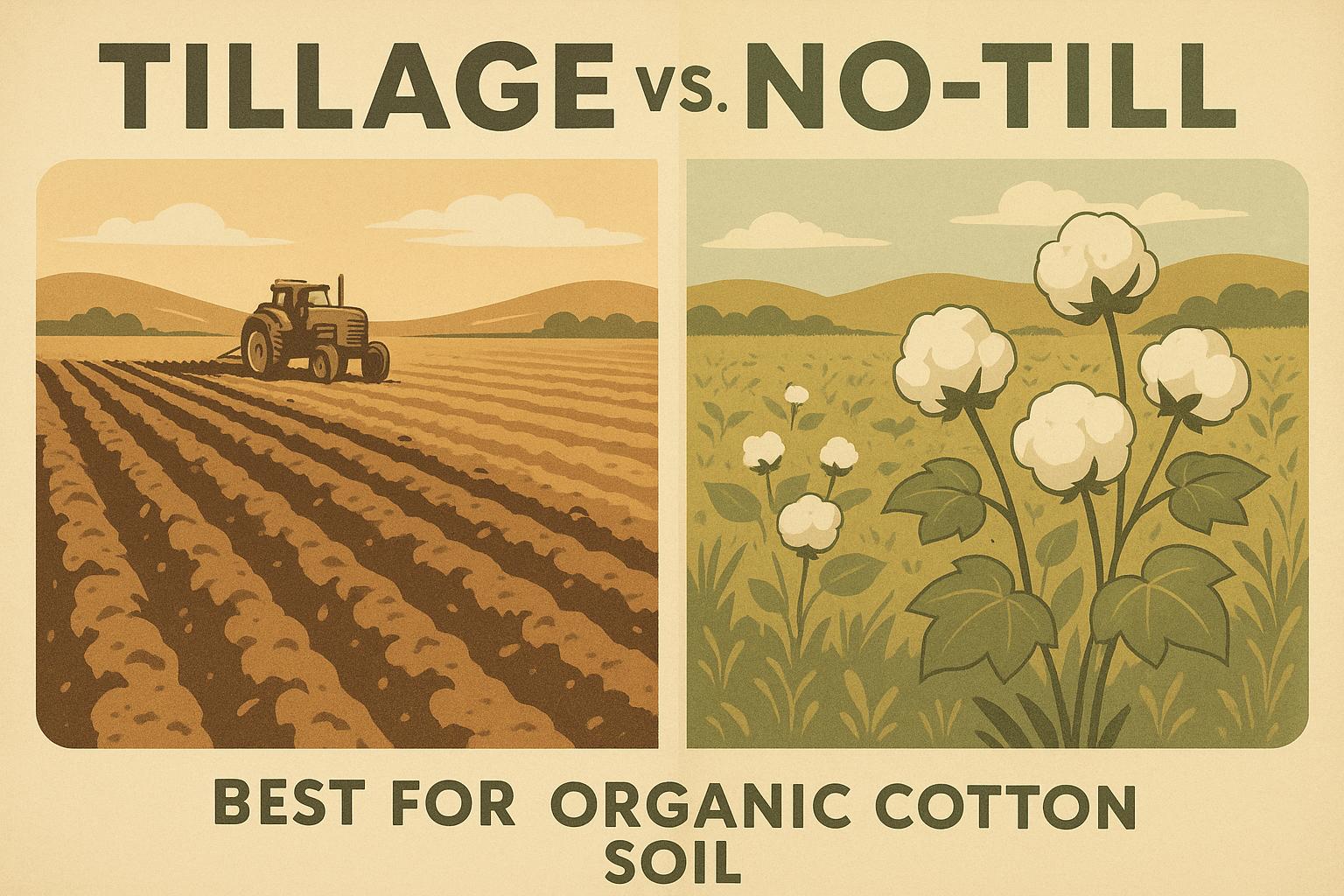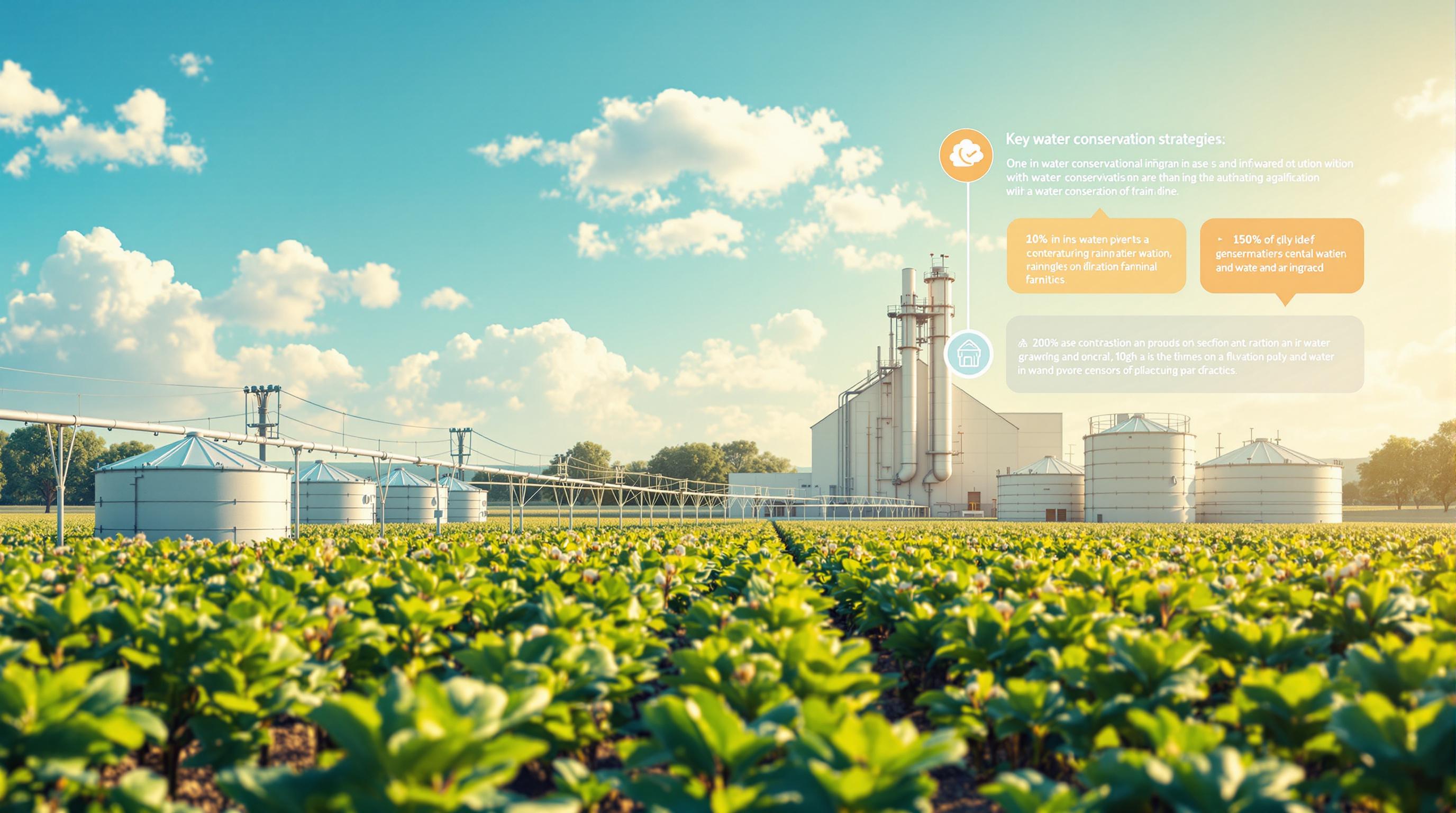The Evolution of Tillage in Cotton Production
You've tilled countless acres, feeling the soil give way under your equipment, knowing that each pass shapes the season ahead. But as environmental pressures mount and input costs climb, rethinking cotton tillage practices becomes more than routine—it's a pathway to conserving your most valuable asset: the land itself. Innovative approaches blend traditional wisdom with modern tools to reduce erosion, enhance water retention, and boost organic matter, all while supporting robust cotton stands and yields.
Extension studies from major cotton belts show that optimized tillage can cut soil loss by 30-50% in erosion-prone fields, preserving topsoil that might otherwise wash away at rates of 5-10 tons per acre annually. Factors like residue management, equipment selection, and timing all influence outcomes, but with strategic shifts, you can address challenges like compaction in heavy clays or nutrient leaching in sands. Assuming you're familiar with basics like chisel plowing and disking, we'll explore advanced methods that prioritize conservation, drawing on agronomic data to guide implementation in your operation.
Assessing Your Soil's Needs Before Tillage
Effective cotton tillage practices start with understanding your ground—rushing into cultivation without evaluation can exacerbate issues like crusting or nutrient imbalances, undermining the very conservation you're aiming for.
- Texture and Structure Analysis: Sample across zones for clay/sand ratios; heavy clays benefit from minimal disturbance to avoid smearing, while sands require residue retention to build structure. Data indicates compacted layers at 6-12 inches reduce root penetration by 20%, limiting water access during boll fill.
- Organic Matter Levels: Test for content below 2% signals vulnerability to erosion; aim to maintain 3-4% through targeted practices, as trials show this boosts water-holding capacity by 15-20%, crucial in variable rainfall.
- Erosion Risk Mapping: Use GPS tools to identify slopes >2%; high-risk areas demand contour tillage to slow runoff, preserving 25-40% more topsoil per storm event per extension reports.
Incorporate historical yield data to pinpoint problem spots; annual audits refine your approach. Challenges in variable fields are met by zoned strategies, ensuring tillage matches specific needs without overworking stable areas.
Reduced Tillage Systems: Minimizing Disturbance for Maximum Benefit
Shifting to less intensive methods preserves structure while cutting fuel and labor—innovative cotton tillage practices like no-till or strip-till offer paths to conservation without sacrificing productivity.
- No-Till Advantages: Plant directly into residue; this slashes erosion by 90% in sloped fields, per long-term studies, while building organic matter at 0.5-1% annually. In cotton, it enhances moisture retention for drier spells, supporting 10-15% better stands in low-rain years.
- Strip-Till Techniques: Till narrow bands for seedbeds while leaving inter-rows intact; this warms soil faster for earlier planting in cooler climates, boosting germination rates by 8-12%. Equipment like row cleaners manage residue effectively, reducing weed pressure.
- Cover Crop Integration: Sow winter rye or vetch post-harvest; terminate before cotton to add mulch, suppressing weeds and adding nitrogen equivalent to 30-50 lbs/acre naturally.
Adopt gradually on 20-30% acreage to test; pair with herbicide programs for weed control. Challenges like cooler springs in no-till are offset by starter fertilizers or row warmers.
Conventional Tillage Innovations: When Deeper Work is Needed
For compacted or poorly drained soils, traditional methods still have a place—refine cotton tillage practices with precision to conserve while addressing subsurface issues.
- Chisel Plowing Depths: Target 12-18 inches to fracture hardpans without inverting soil; this improves infiltration by 25-35%, per field trials, reducing puddling in heavy rains.
- Disk Harrow Adjustments: Use offset disks for residue incorporation; lighter passes at 4-6 inches mix organic matter evenly, enhancing microbial activity for better nutrient cycling.
- Subsoiling Strategies: Employ in-row rippers every 2-3 years; GPS guidance ensures minimal overlap, preserving 15-20% more undisturbed soil than blanket applications.
Calibrate for soil moisture—till when friable to avoid clods. Challenges in erosive hills require immediate cover seeding post-till to stabilize.
Equipment Upgrades for Conservation-Focused Tillage
Modern machinery transforms cotton tillage practices, enabling precise, low-impact work that conserves energy and soil.
- GPS-Guided Systems: Auto-steer reduces overlap by 10-15%, saving fuel; variable-depth controls adjust on-the-fly for zoned needs, optimizing for variable textures.
- Residue Management Tools: High-speed disks slice cover at shallow angles; this maintains 30-50% surface cover, cutting evaporation losses by 20% in arid zones.
- Multi-Function Implements: Combo ripper-planters till and seed in one pass; this cuts trips by half, reducing compaction from repeated traffic.
Budget for upgrades with ROI calculators—fuel savings alone recoup costs in 2-4 years. Challenges in older fleets are met by retrofits like guidance kits.
Integrating Tillage with Nutrient and Pest Management
Conservation tillage amplifies other practices—align cotton tillage practices with fertility and IPM for holistic benefits.
- Nutrient Placement: Band applications in tilled strips concentrate fertilizers near roots; this boosts uptake by 15-20%, reducing runoff in conservation systems.
- Pest Suppression: Residue from reduced till harbors beneficials; this cuts aphid pressure by 10-25%, per biological control studies.
- Weed Control Synergies: Mulch from covers smothers emergence; combine with narrow-row tillage for 30% less herbicide reliance.
Soil tests guide integrations; annual adjustments refine. Challenges like nematode buildup in no-till are countered by rotations.
Measuring Soil Conservation Outcomes
Quantify impacts to validate cotton tillage practices—track metrics for continuous improvement.
- Erosion Rate Assessments: Use rainfall simulators or transects; reduced till shows 40-60% less loss than conventional, per long-term plots.
- Organic Matter Trends: Annual sampling; gains of 0.5% yearly correlate with 10% yield stability in variable weather.
- Water Infiltration Tests: Ring infiltrometers measure rates; improved by 20-30% post-conservation shift, aiding drought resilience.
Software aggregates data; benchmarks against regional averages guide tweaks. Challenges in measurement are simplified with app-based tools.
Economic Analysis of Tillage Shifts
Conservation pays long-term—balance upfront costs with savings in cotton tillage practices for net gains.
- Cost Breakdown: Reduced till cuts fuel/labor by $20-40/acre; equipment wear drops 15-25%, extending life.
- Yield Impacts: Stable soils boost averages 100-200 lbs/acre in stress years; premiums for sustainable lint add 2-5 cents/lb.
- Incentive Programs: Carbon credits or NRCS payments offset transitions; ROI often 2-3 years.
Farm calculators model scenarios; challenges in volatile inputs are met by diversified savings.
Overcoming Regional Tillage Challenges
Adapt cotton tillage practices to your locale for targeted conservation.
- Arid Southwest: Focus no-till with drip; preserves moisture, cutting evaporation 25%.
- Humid Southeast: Strip-till drains excess; reduces root rots by 15-20% in wet springs.
- Variable Plains: Chisel in contours; halts wind erosion, saving 30% topsoil.
Local data from extensions fine-tunes; iterative trials optimize.
Case Studies: Real-World Conservation Success
In Texas Panhandle, a 5,000-acre operation switched to strip-till, boosting organic matter 1.5% over five years and yields 150 lbs/acre in droughts. Southeast growers using cover-integrated no-till cut erosion 50%, improving water quality and premiums.
These demonstrate scalable wins; adapt for your scale.
Future Innovations in Cotton Tillage
Advancements like robotic tillers and AI soil analytics will refine cotton tillage practices, predicting needs with 90% accuracy.
Sensor-equipped implements adjust depths real-time; biotech covers enhance benefits.
Stay engaged with research for edges.
Actionable Takeaways for Your Tillage Plan
To innovate cotton tillage practices for conservation:
- Assess Soil: Map texture/organic levels; identify erosion risks.
- Choose System: Trial reduced/strip-till; integrate covers.
- Upgrade Equipment: Add GPS/residue tools; calibrate precisely.
- Measure Outcomes: Track erosion/yields; adjust annually.
- Scale Economically: Calculate ROI; leverage incentives.
Innovative cotton tillage practices safeguard soil, ensuring sustainable productivity.
Cotton tillage practices evolve with conservation at the core, positioning your farm for enduring success amid changing demands.


